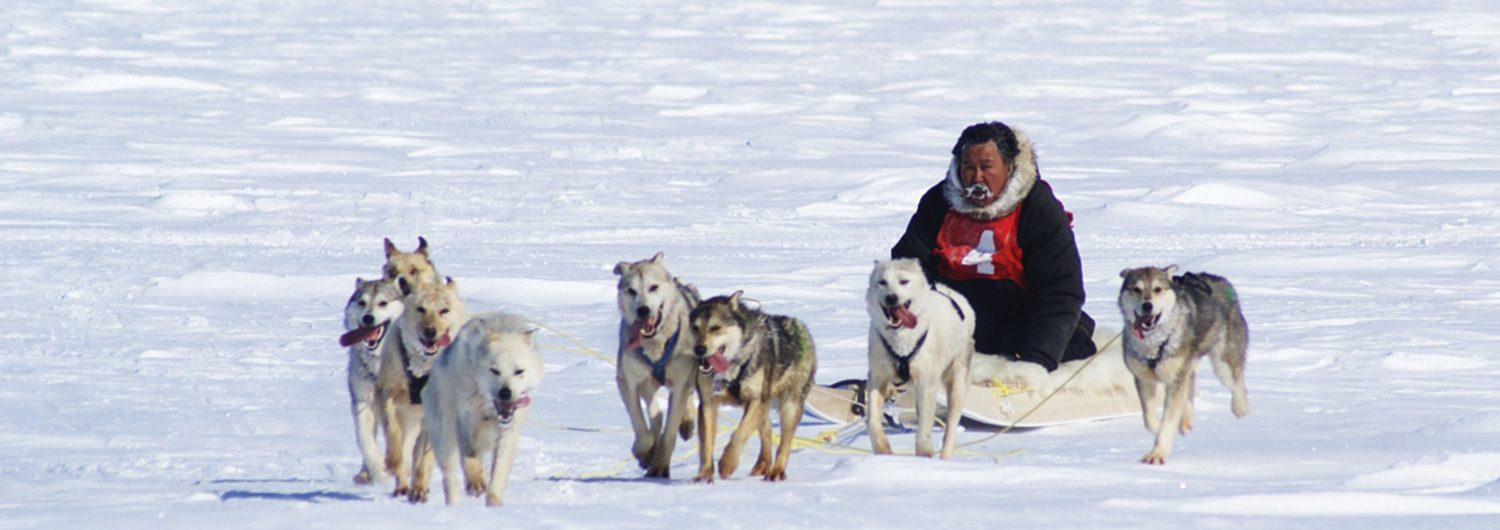The Arctic People Groups
Arctic people live in a diversity of landscapes and cultures, with different diets, economic opportunities, and living standards. Some of this diversity is also apparent among geographically close groups or even within communities. In spite of this diversity, there are some similarities across the countries and regions that provide an important background for understanding how changes in the environment will affect people’s well-being.
The Arctic population as a whole lives close to the environment. This is especially true for indigenous people, but also applies to many other inhabitants of the region. Using local resources is common, and what can be harvested or caught is often the most important source of food. A threat to resources such as reindeer or caribou, marine mammals, and fish is thus not only a threat to Arctic cultures but also to people’s ability to obtain nutritious foods. Some communities also rely on local sources of drinking water, and lack of water treatment makes the water supply vulnerable to contamination.
Life expectancy is lower for most Arctic populations than elsewhere in each country. The pattern in causes of death is also different. Death from accidents is much more common than among the general population. In Russia and North America, diseases associated with poor living conditions and poor access to health care are also more common. Alcohol and tobacco use is high in many Arctic communities, and alcoholism is a serious concern.
Health care in most of the Arctic is improving, but sparse populations and long distances limit capacity, especially for getting advanced care. In Russia, disruption of supply lines and removal of incentives to move north have reduced health care capacities below their levels in the 1980s.
In general the Arctic populations are young. In many regions, birth rates are high and infant mortality is much lower than a few decades ago. Again, the one exception is Russia, where the economic situation has caused extensive emigration, and declining health care has led to increased mortality of all age groups. Russia is also the only country in which infant mortality is not declining.
Living standards vary by country. The living standards of native people in North America are higher than among native people in Russia. Nevertheless, the Arctic average is substantially lower than elsewhere in each country. For Greenland, the same applies in a comparison with Denmark. Housing is often crowded, and many dwellings lack modern conveniences such as running water. In the Nordic countries, this distinction is not as apparent.
Jobs are often scarce in the north, and advanced schooling is usually only available outside the region. However, employment and income statistics should be treated with caution as they do not include the extensive and often very productive subsistence economy that exists outside the better documented cash economy.
A common problem in almost all Arctic countries is in the communication between majority populations and indigenous people. For example, many scientists as well as public health authorities lack the necessary cultural and linguistic skills to communicate about contamination. Moreover, many indigenous people lack education in the majority languages in their countries and might therefore be unable to use information that is available in the public debate.
Some of the native languages have been under threat throughout the period of colonization. Historically, national authorities or schools have often discouraged or even forbidden people to speak their mother tongue. Today, there is no such overt discrimination, but for some groups the languages have suffered enough that older and younger people within the same group can have trouble communicating with each other. Other languages have always thrived while some, such as Saami, are experiencing a revival connected to a renewed cultural awareness.
There are also some similarities at the political level. Many indigenous groups are more active than ever in working towards self-governance, and in asserting native rights. The Greenland Home Rule and the Nunavut Government in Canada are two examples. In Russia, the Association of Indigenous Peoples of the North, Siberia, and the Far East of the Russian Federation (AIPON) is working to unite the common interests of 30 indigenous peoples and cooperates with indigenous groups in other countries. Native groups are also renewing contact across national borders, for example in the Saami Council and the Inuit Circumpolar Conference. This cultural and political revival is a positive force at a time when many communities are suffering greatly from disintegrating social and cultural ties.
Generalizations about Arctic peoples can be useful in looking at patterns and similarities, but they can also hide important information. On a practical level, statistical averages about food habits or living conditions can conceal widely ranging figures among individuals, even within the same community. Also, statistics do not reveal the vitality and resilience of the cultures of the Arctic, nor do they make clear the dynamics of the cultural changes most communities are going through. In the context of contaminants, daily decisions today often include such previously arcane questions as the levels of industrial chemicals in local foods.
Moreover, the statistics do not put any emphasis on the fragility of the links between people and their environment. These links can be disrupted by contaminants, and also when researchers or health authorities raise concerns about whether indigenous foods are fit to eat. The fear that food is contaminated can itself be destructive, since what was nourishing now appears tainted, whether contaminants are actually present or not. The future of Arctic peoples depends on preventing the degradation of the Arctic environment. The connections between cultures and the environment may be intangible, but they nevertheless lie at the heart of the debate about pollution, global change, and sustainable development.

